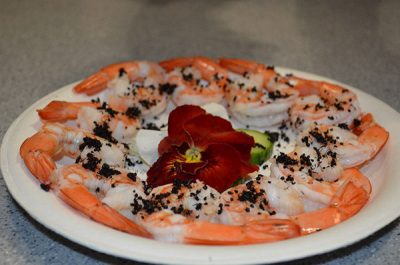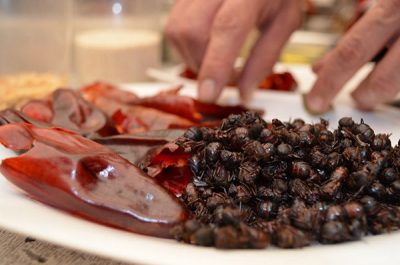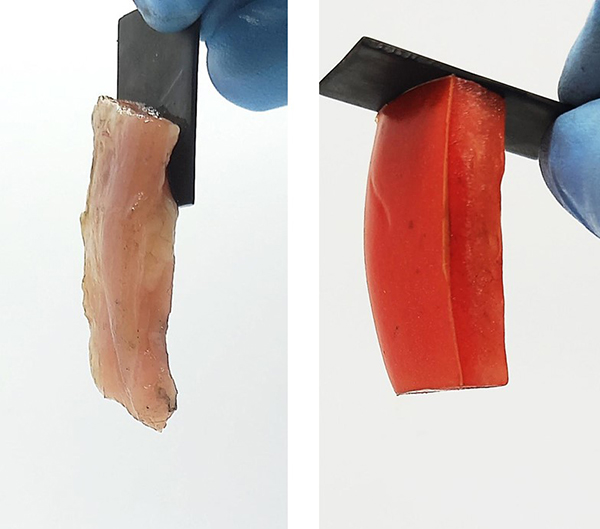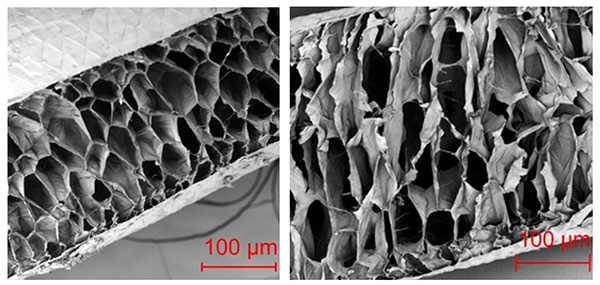FOR IMMEDIATE RELEASE
NEW ORLEANS, March 17, 2024 — Insects are typically unwelcome visitors to a picnic, but they could be a flavorful, nutritious and sustainable addition to the menu. Eating insects is common in some parts of the world, and some species are even considered delicacies. Ants are one example, sometimes roasted whole for a snack or ground and used to add flavor and texture to dishes. Researchers now report the unique aroma profiles of four species of edible ants, which taste markedly different from one another.
The researchers will present their results today at the spring meeting of the American Chemical Society (ACS). ACS Spring 2024 is a hybrid meeting being held virtually and in person March 17-21; it features nearly 12,000 presentations on a range of science topics.
Watch a Headline Science YouTube Short about this research.
“I'm interested in ants because I once led a summer field study in Oaxaca, Mexico,” says Changqi Liu, an associate professor of food science. “You can easily find different edible insects in the market there, just like other food ingredients.”
There have been few prior studies on the flavors of edible insects. But understanding flavor profiles could help the food industry formulate products with these readily available species. “If there are desirable flavors, scientists can investigate ways to promote their formation, and if there are undesirable flavors, they can find ways to eliminate or mask these odors,” says Liu.

To better understand which compounds contribute to the flavors of edible ants, Liu and his team at San Diego State University analyzed the odor profiles of four species: the chicatana ant, common black ant, spiny ant and weaver ant.
The researchers identified the volatile compounds present in samples from each species, using gas chromatography-mass spectrometry, and matched them to odors sensed using an olfactometer. They were puzzled by some volatiles for which they were unable to sense an odor; the team later figured out those chemicals were ant pheromones. Even at high concentrations, humans aren’t able to smell the alkanes that ants use as chemical messengers. But they were able to identify other noticeable odors that contribute to the flavor of these ant species.
The team found that common black ants have an acidic and vinegary smell, primarily because of their high content of formic acid, which is a compound the ants secrete from venom glands. The researchers also detected the presence of large alkanes the ants use as alarm pheromones.
Unlike common black ants, the chicatana ants tested did not contain formic acid, and their predominant smell was nutty, woody and fatty. The researchers attributed fatty, grassy odors to the presence of aldehydes. They say the nutty, roasted smell comes from pyrazines, compounds also produced when meats and bread are cooked. Chicatana ants use a type of pyrazine as a trail pheromone.

Weaver ants were characterized as having a nutty, sweet and caramel-like aroma caused by the presence of various pyrazines and pyrroles, but the researchers also detected hay and urine-like off-flavors likely due to high concentrations of amines.
The team also analyzed the composition of ants at various developmental stages. They compared adult spiny ants to the same species in the pupa stage. Like common black ants, the adult spiny ants contained formic acid. In contrast, the pupa did not contain formic acid, because venom glands grow as they mature.
Next, Liu and his team hope to further investigate the flavor profiles of more ant species and developmental stages like ant eggs, which are considered a delicacy in some countries. So far, the team has only analyzed female chicatana ants, known as queens, but they would like to compare the flavor profile to male ants, or drones, of the same species. The researchers would also like to investigate how different processing affects the flavor of these insects and to conduct sensory evaluations with a human panel.
Edible insects can be delicious alternatives to animal proteins, but people with food allergies should be cautious. Tropomyosin, a muscle protein, is a common allergen responsible for crustacean and shellfish allergies and is highly conserved across many invertebrate species. So, people with a sensitivity to crustacean shellfish may experience similar reactions to insects. Also, while edible insect production produces fewer greenhouse gas emissions than traditional animal farming, prices are high because large-scale farming of insects is still new. And consumer acceptance in some countries is a challenge for the food industry.
Nevertheless, Liu believes insects could be a great addition to the menu. “They can have very diverse and interesting flavor profiles. And that really increases the culinary possibilities of using these insects to create delicious food,” he says. Telling people about the edible insects’ nutritional and environmental benefits promotes people’s willingness to consume them, he adds. “But I don't want people to feel that they are making a sacrifice by eating these insects. I want to show that they can actually taste very good, while being nutritious and good for the environment.”
The research was funded by the US Department of Agriculture (USDA)-National Institute of Food and Agriculture (NIFA)-Hispanic-Serving Institutions (HSI) Education Grants Program, the USDA-NIFA-From Learning to Leading: Cultivating the Next Generation of Diverse Food and Agriculture Professionals (NEXTGEN) Program, the San Diego State University Faculty-Student Mentoring Program, and the San Diego State University School of Exercise and Nutritional Sciences Student Research Grant.
Visit the ACS Spring 2024 program to learn more about this presentation, “Exploring flavors of edible ants: A path to sustainable gastronomy and consumer acceptance,” and more scientific presentations.
###
The American Chemical Society (ACS) is a nonprofit organization chartered by the U.S. Congress. ACS’ mission is to advance the broader chemistry enterprise and its practitioners for the benefit of Earth and all its people. The Society is a global leader in promoting excellence in science education and providing access to chemistry-related information and research through its multiple research solutions, peer-reviewed journals, scientific conferences, eBooks and weekly news periodical Chemical & Engineering News. ACS journals are among the most cited, most trusted and most read within the scientific literature; however, ACS itself does not conduct chemical research. As a leader in scientific information solutions, its CAS division partners with global innovators to accelerate breakthroughs by curating, connecting and analyzing the world’s scientific knowledge. ACS’ main offices are in Washington, D.C., and Columbus, Ohio.
To automatically receive press releases from the American Chemical Society, contact newsroom@acs.org.
Note to journalists: Please report that this research was presented at a meeting of the American Chemical Society. ACS does not conduct research, but publishes and publicizes peer-reviewed scientific studies.
** An addition to the funder list was made by the researchers on March 21, 2024.**








